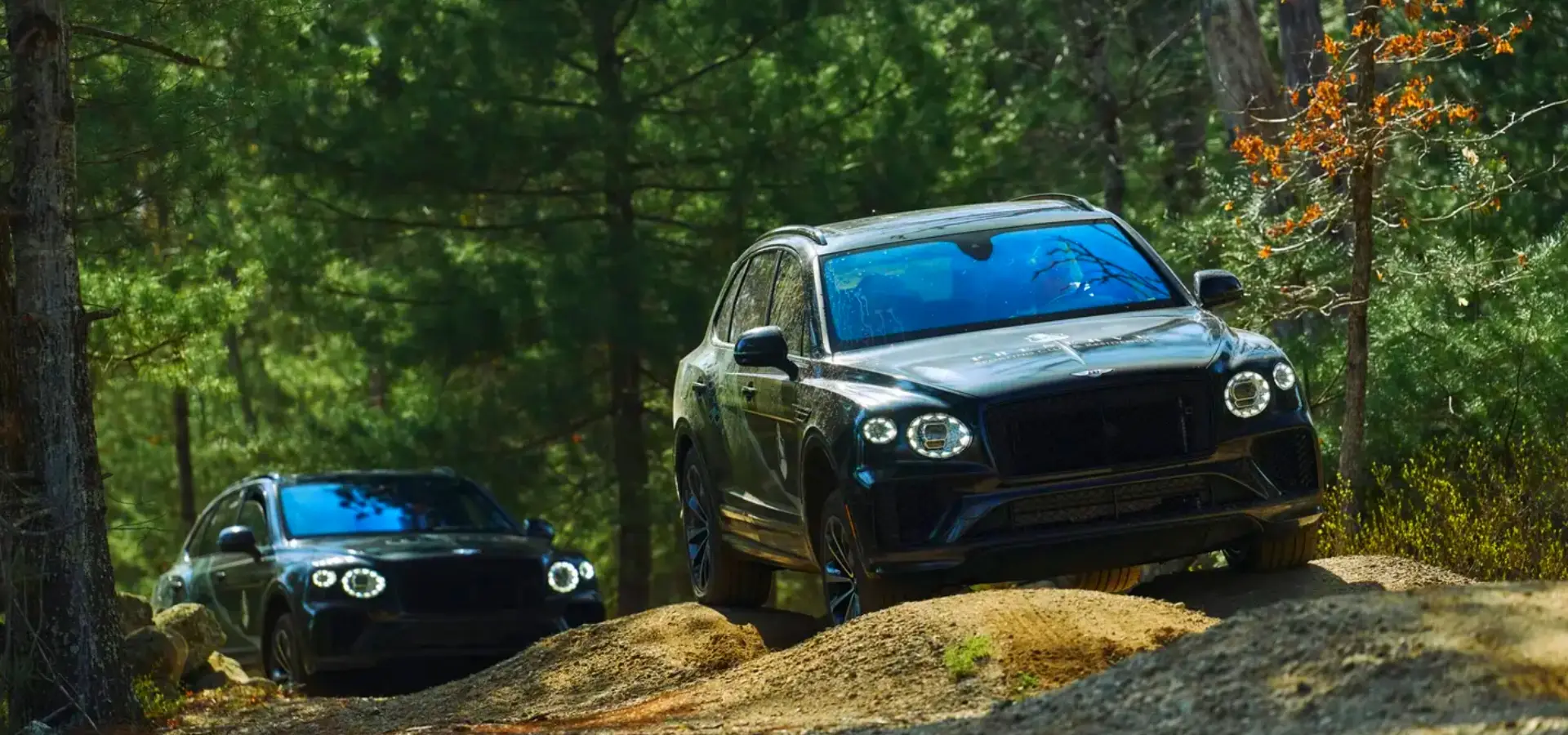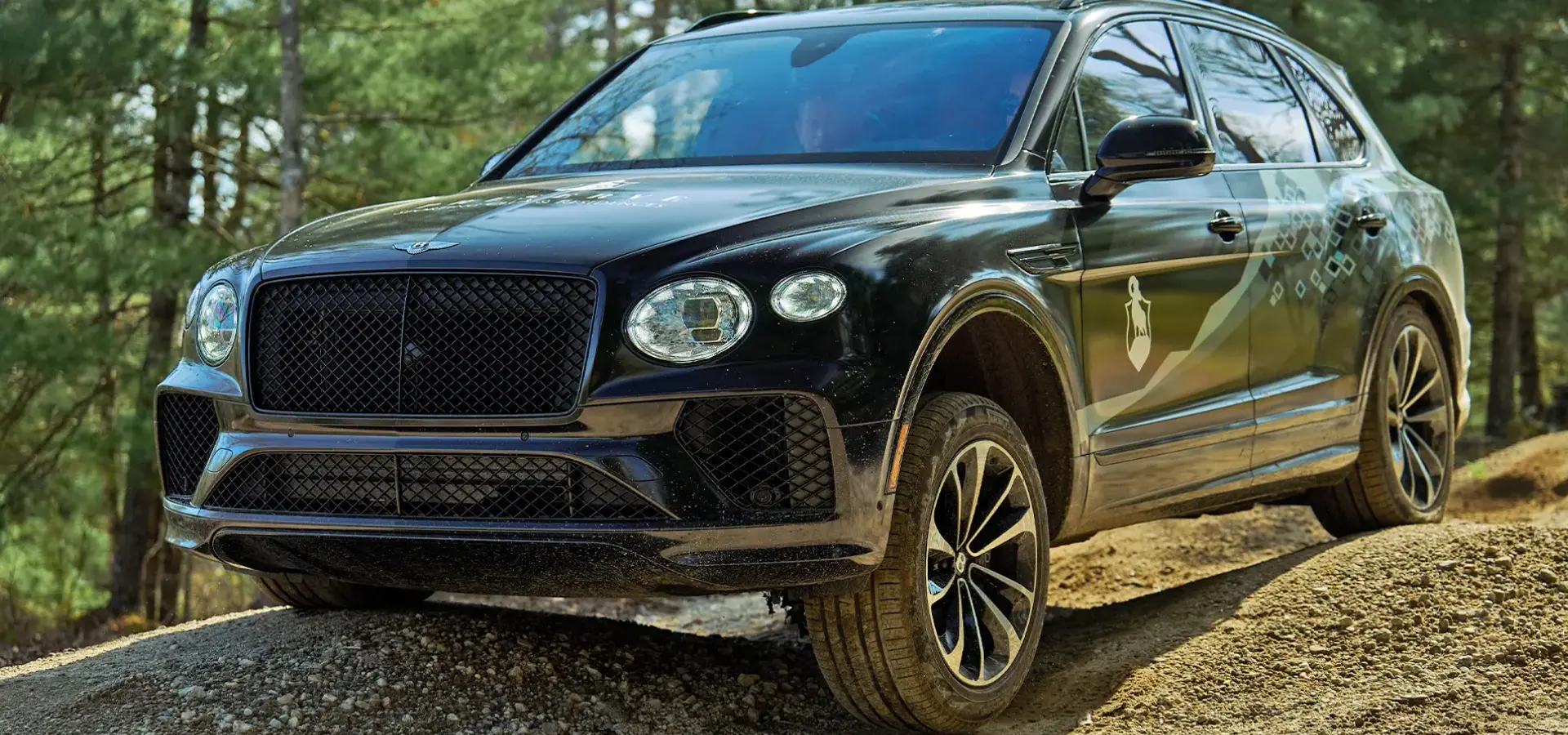Then, just recently, I hopped into a Bentayga without a trailer and hit the off-road course. I’m typically pretty comfortable in these situations, being The Drive’s truck editor and all, but I’ve never whipped a car that costs more than my house through mud, boulders, and deep dirt pits. Again, I wouldn’t expect to see somebody who owns one treating their car the same way, but just like the tow test, this isn’t about what people should do. It’s about what the car can do.

Take the bodywork off the Bentayga along with its snazzy “Winged B” logos and what you have is a solid base for four-wheeling. The boosted V8 sends power through an eight-speed automatic and locking Torsen center differential to all four wheels, and the drivetrain is pretty good at getting traction on surfaces like gravel. There’s no front locker or any over-the-top off-road features because if there were, they’d be a waste. Even though it can do off-road things, it’s better for everyone if it doesn’t instill too much confidence in its millionaire owners to conquer every obstacle in Moab, trail systems and undercarriage be damned. It’s built on the Volkswagen Group’s MLB platform, so it’s a unibody, but hey—so was the Jeep XJ.
If anyone tells you they need their hardcore 4×4 for run-of-the-mill trail driving, they’re either fibbing or disillusioned. The Bentayga is more than enough, especially once you tack on the All-Terrain package that adds additional drive modes like Snow and Grass, Dirt and Gravel, Mud and Trail, and Sand with corresponding adjustable suspension heights and stability control settings. It comes with 285/45 R21 Pirelli Scorpion tires, which are plenty capable when combined with 9.7 inches of ground clearance—more than a Honda Pilot TrailSport but less than a Range Rover in its tallest suspension setting.
Hopefully, I’m painting the picture accurately here. The Bentayga isn’t an off-road special. It also isn’t a total pavement princess. That’s OK by me.
As I drove up on a steep embankment, I was surprised to find that the Bentley’s infotainment screen displayed a lot of relevant data. First was the roll and pitch angle, which measured 23 degrees on the course they built at The Preserve in Rhode Island. It doesn’t look like an old-school inclinometer; it’s more of a plain, digital layout. The 10.9-inch center display also shows a graphic of the car with corresponding animations for each wheel and its place in its travel zone, with a line that turns red when it’s maxed out in compression or extension.
Bentley’s four-wheel independent air suspension makes for a cushy ride both on the road and off it, and while the automaker doesn’t publish explicit stats for wheel travel, I’d say it’s OK. A far cry from an F-150 Raptor, of course, but articulation didn’t feel far off the coil-sprung Toyota Tundra as it lifted a wheel off the ground in each of the purposely dug divots. It made it through the trials, even while three-wheeling, so I’m not sure you can ask for much more.
The Bentayga makes use of other software to augment the off-road experience, too. Hill descent control is a familiar feature in 4x4s these days, and wouldn’t you know it, the Bentayga has it. It works in drive as well as reverse, which is handy for backing out of steep and hairy situations. My thing is, it’s not entirely predictable. While I set the downhill assist at 3 and 4 mph, I found it bumping up to 7 mph without any clear input on my end. That’s a problem for obvious reasons, and if it were me, I’d stick to manual braking.
Both you and the car benefit when you handle matters yourself. While it’s cool that the Bentayga can clamor through a patch of basketball-sized rocks with your foot off the brake, it doesn’t have to try and figure out what it’s doing if you just modulate the pedals yourself. It stops strong and because of its low-end torque, it goes without much throttle and, even better, without much wheelspin. Slow and steady wins the race when off-roading, and in the right hands, the Bentayga can do that well.
Everything we’ve talked about so far is great, but it’s not the most practical information. What matters more is how the Bentayga does when the road is rough. That’s because even if real owners won’t purposely take one to an ORV park, they may very well take it on a miles-long private gravel road to a friend’s house. Or, if not that, a quasi-remote camping spot where the Airstream they rented is furnished and waiting for them to arrive.
In that sense, the Bentayga does exceptionally well. There were a few objects purposely placed in the way for us to experience the ride when the going gets rough, like chopped-up logs and rocks embedded in the dirt. You can take those at slow cruising speeds and the bumps are less jarring than a New England or SoCal pothole on the freeway. Importantly, they never make the car lose its composure. It’s one thing to get shaken up by a crushing bump, but it’s another to be unsettled and momentarily lose control of the car’s direction. While manually operating the Bentayga off-road, I never felt out of control, which says everything you truly need to know about it. The fundamentals are there, and that arguably outweighs the lacking and ultimately unnecessary software.
The Bentayga could be better when venturing off the highway, but you and I both know it doesn’t need to be. That’s why I’ll never complain about this high-rolling, pavement-pounding SUV that can also tackle a dirt track at your buddy’s property. And if you own a Bentayga, your buddy does have a massive property. If I learned anything during my stint with the Bentley crew in New England, it’s that you are who you hang out with. For Bentley owners, that means you’re a rootin’ tootin’ one-percenter, and you probably don’t care about kicking up rocks in your daily driver, even if it does cost more than my humble abode.
SOURCE: The Drive by Caleb Jacobs


